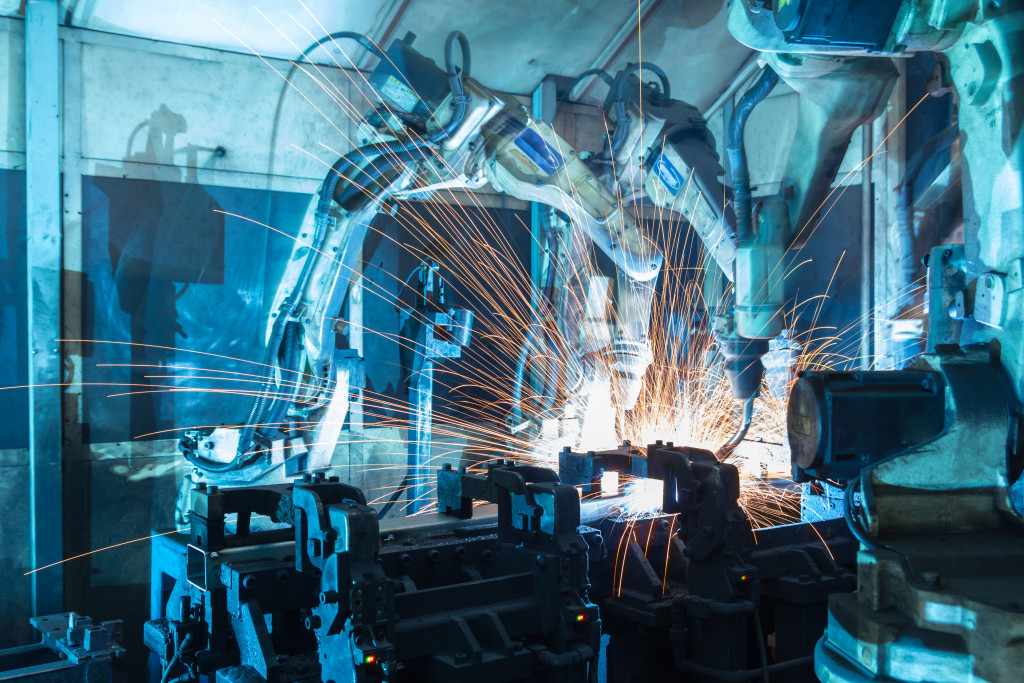- Workplace productivity tools have evolved from manual, labor-intensive tools to today’s advanced machinery, significantly enhancing efficiency and output.
- This historical development reflects humanity’s ongoing pursuit of greater efficiency and effectiveness in industrial operations.
- The introduction of sophisticated tools over time has led to leaps in productivity, enabling quicker and more precise outcomes with reduced human effort.
- This continuous technological advancement has transformed industry operations, playing a crucial role in maintaining competitiveness in the global economy.
In today’s rapidly evolving marketplace, enhancing productivity across various industries isn’t just a goal—it’s a necessity. Integrating next-generation tools and technologies marks the difference between staying ahead and falling behind. Moving beyond essential equipment is crucial for competitiveness and efficiency. This transition streamlines operations and opens up new avenues for growth. As we delve into the world of advanced productivity tools, we’ll explore how embracing these innovations is essential for any business aiming to thrive in the modern economy.
The Evolution of Workplace Productivity Tools
The narrative of workplace productivity tools is a compelling chronicle of transformation, spanning from the age of manual, labor-intensive instruments to today’s advanced technological marvels. This journey underscores humanity’s unyielding drive for enhanced efficiency and effectiveness, deeply rooted in our collective ambition to optimize work processes.
As industries across the globe and in Singapore progressed, the evolution of tools kept pace, ushering in an era of sophisticated machinery that fundamentally altered the approach to tasks. The advent of each innovative tool marked a significant increase in productivity and efficiency, facilitating quicker, more accurate results while reducing human fatigue. This ongoing evolution transcends mere technological advancements; it reflects our persistent quest for betterment. It reshapes industries’ operations, enhancing competitiveness in the increasingly interconnected global economy.
The Role of Technology in Modernizing Productivity Tools
The digital transformation has ushered in a new era for workplace tools, marking a significant shift from conventional methods to integrating cutting-edge technologies such as the Internet of Things (IoT), Artificial Intelligence (AI), and automation. This evolution is not merely an upgrade; it’s a complete overhaul of how industries operate, enhancing efficiency and setting new benchmarks for productivity.
Advanced Material Handling Equipment
The emergence of advanced material handling equipment marks significant progress in operational efficiency. These electric-powered innovations are transforming logistics and warehouse management, increasing speed and accuracy, notably minimizing the environmental impact, and greatly enhancing safety measures in the workplace.
Adopting this equipment represents a pivotal shift towards sustainable operations, emphasizing the substantial advantages of incorporating eco-friendly technology into industrial processes. By prioritizing material handling equipment that leverages the latest advancements, businesses are streamlining their operations and contributing positively to environmental sustainability and workplace safety.
Smart Inventory Management Systems
The deployment of intelligent inventory management systems powered by AI and machine learning represents a leap forward in how businesses manage their stock. These systems offer unprecedented precision in optimizing inventory levels, reducing waste through predictive analysis, and refining supply chain operations. By leveraging real-time data, businesses can ensure optimal stock availability, prevent overstocking or stockouts, and ultimately, drive cost efficiency and customer satisfaction.
Robotics and Automation in Production Lines
Robotics and automation have become cornerstones in the modernization of production lines. Their integration brings unmatched precision, speed, and reliability, transforming the manufacturing landscape. While the transition poses challenges, including the initial investment and the need for specialized training, the long-term benefits in productivity and quality are undeniable. These technologies enhance production capabilities and open the door to innovation, enabling companies to meet complex demands with greater agility.

Augmented Reality for Training and Maintenance
Augmented Reality (AR) is redefining training and maintenance processes, offering immersive and interactive experiences that significantly improve learning outcomes and operational efficiency. AR facilitates hands-on training without physical presence, allowing employees to practice and refine their skills in a controlled, virtual environment.
Furthermore, AR in maintenance tasks enables technicians to visualize and diagnose issues with unprecedented clarity, reducing downtime and enhancing equipment longevity. This AR technology application underscores its potential to complement and evolve traditional training and maintenance methodologies.
Overcoming Challenges in Integrating Next-Gen Tools

Integrating next-generation tools into business operations presents challenges, including the significant investment required, the need for comprehensive employee training, and the hurdles of technology adoption. However, by strategically addressing these obstacles, businesses can smoothly transition to more advanced, efficient systems. Investment concerns can be mitigated through phased implementations and exploring financing options, while tailored training programs can equip staff with the necessary skills. Also, fostering an innovation culture encourages adaptability, ensuring a smoother integration of these technologies. By overcoming these barriers, companies position themselves to leverage the full potential of next-gen tools for enhanced productivity.
Final Thoughts
Despite the challenges, the adoption of these technologies stands as a testament to the importance of innovation in maintaining competitiveness and efficiency in today’s fast-paced market. As businesses continue to embrace these advancements, they ensure their place in the modern marketplace and contribute to a more sustainable, efficient, and productive future. The critical role of next-gen tools cannot be overstated, and their integration is essential for any business aiming to thrive in the contemporary economic landscape.


